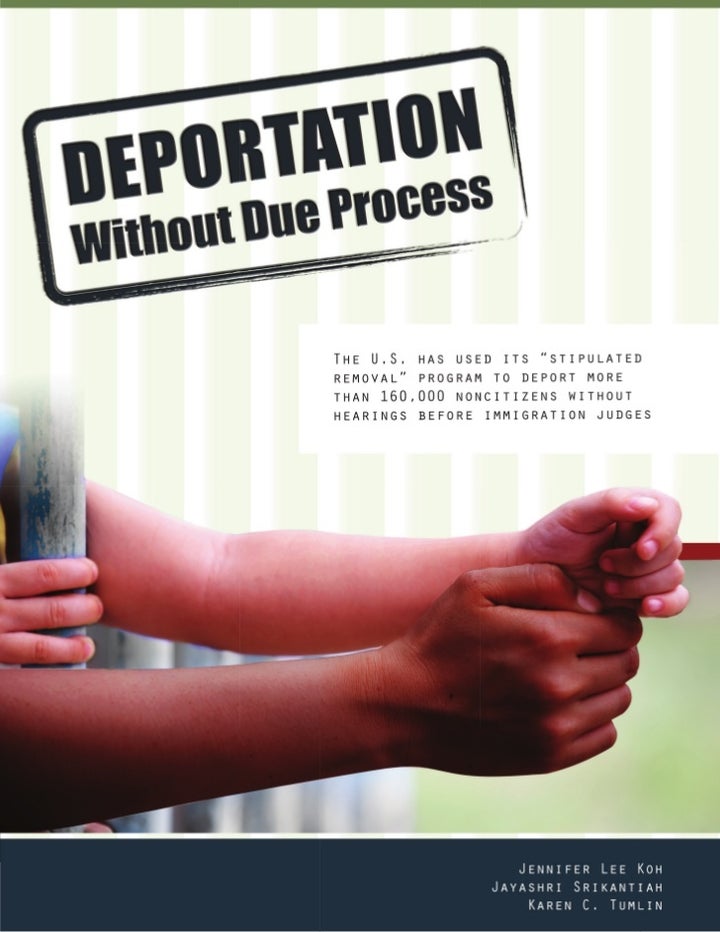
Our immigration court system is in the midst of a crisis. The number of cases awaiting resolution reached 496,704 as of the end of June 2016, and the flow of new cases exceeds the number of cases completed each month so that the backlog will continue to grow. The end of June figure represents an average backlog of 1,819 cases for each of the 273 immigration judges. It would take about 2.5 years to clear up this backlog even if there were no new cases coming in. The House Subcommittee on Immigration and Border Security held a hearing on this on December 3, 2015. The solution considered at the hearing was to increase the number of immigration judges. Certainly, that would help, but I do not believe that the supply of qualified lawyers is big enough to make a sufficient increase. Even if it were possible, the resulting increase in decisions from the immigration court would greatly increase the backlog at the Board of Immigration Appeals. An alien who is dissatisfied with the decision of an immigration judge can appeal the decision to the Board of Immigration Appeals, and his deportation will be postponed while the appeal is pending.
The Board faced a similar backlog crisis in 1999 during the Administration of Bill Clinton. Unsuccessful attempts were made to handle the backlog by adding Board members and increasing support staff. When it became apparent that a different approach was needed, Attorney General Janet Reno changed the regulations governing the Board to reduce the number of cases that would receive a full review by creating a “streamlining panel.” Cases that can be disposed of quickly are directed to the streamlining panel for expedited processing by a single Board member. The rest of the cases are directed to a merits panel where they will be reviewed by three members. On the streamlining panel, a staff attorney reviews the file, prints out a form order that affirms or reverses the judge’s decision, and then a member signs the decision or sends it back to the staff attorney for a different disposition.
I predict that something similar will be done to reduce the caseload of immigration judges. The obvious choice would be a modified stipulated removal program. Stipulated removal permits an alien in removal proceedings who does not want to fight deportation to waive his right to a hearing. When an alien has agreed to stipulated removal, an immigration judge will sign a deportation order without a hearing if he is satisfied that the requirements for a stipulated removal order have been met.
I asked Wayne Stogner, a retired immigration judge, about this practice. He told me that stipulated removal orders were not common in his court, but he could recall times when 25 or so stipulated removal orders would be handed to him in chambers. The aliens were not present when he reviewed the orders. He only signed stipulated removal orders when he was satisfied from reviewing the documents that the aliens knew their rights and that their agreement to stipulated removal was voluntarily, knowingly, and intelligently made.
Stipulated removal was authorized by section 304 of the Illegal Immigration Reform and Immigrant Responsibility Act of 1996 (IIRIRA), which amended the Immigration and Nationality Act (INA). Initially, the implementing regulations specified that immigration judges could only accept such stipulations from individuals who were represented. In 1997, this language was amended by the Clinton Administration to allow the immigration judge to accept stipulations from unrepresented aliens.
Former President Bill Clinton signed IIRIRA into law. It was included in a larger bill. In those days, it was possible to oppose “illegal” immigration without being called a racist or a bigot. When his chief of staff, Leon Panetta, gave a briefing on IIRIRA, he said, “We were able, I think, as a result of this negotiation to be able to modify — eliminate the large hits with regards to legal immigrants while keeping some very strong enforcement measures with regards to illegal immigration.” Moreover, Bill’s formal statement at the signing ceremony includes the following comment.
This bill, ... includes landmark immigration reform legislation that builds on our progress of the last three years. It strengthens the rule of law by cracking down on illegal immigration at the border, in the workplace, and in the criminal justice system—without punishing those living in the United States legally.
The pertinent part of the stipulated removal provision, section 240(d) of the INA, reads as follows:
(d) Stipulated Removal. The Attorney General shall provide by regulation for the entry by an immigration judge of an order of removal stipulated to by the alien (or the alien’s representative) and the Service. A stipulated order shall constitute a conclusive determination of the alien’s removability from the United States.
The essential elements of a stipulated removal order are specified in, 8 C.F.R. § 1003.25, which provides that the stipulation must include an admission that all factual allegations contained in the charging document are true; a concession of deportability or inadmissibility; and a waiver of the right to appeal the order. The objective of the regulation is to make sure that the alien knows what he is doing when he signs a stipulated removal agreement.
The stipulated-removal program was rarely used until President George W. Bush ramped up immigration enforcement in 2004. From 2004 to 2010, more than 160,000 aliens were deported on the basis of stipulated removal orders. I was not able to find more recent statistics.
According to the American Immigration Council, the vast majority of the 160,000 aliens who agreed to stipulated removal orders between 2004 and 2010, were in detention and were not represented by an attorney. Consequently, it is doubtful that their agreements really were voluntarily, knowingly, and intelligently made.
There were strong objections to the streamlining panel too.
